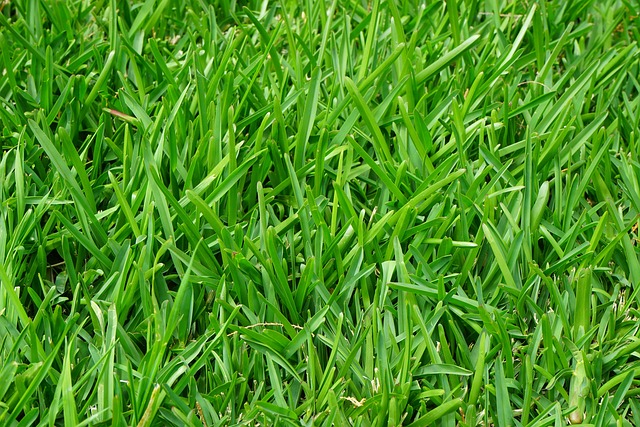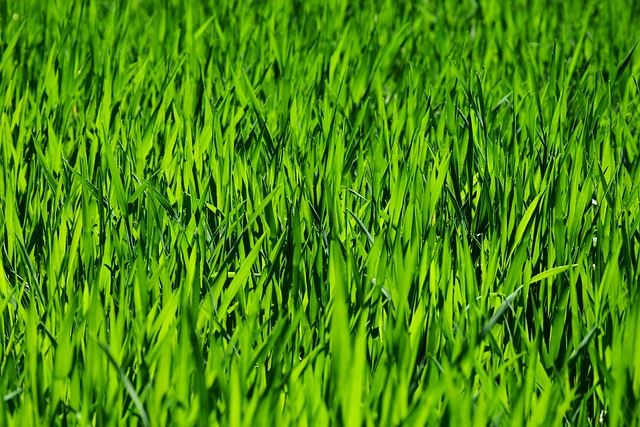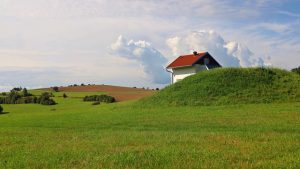Mastering Lawn Care: A Guide to Elevating Landscaping Design
Lawn Care and Landscaping are fundamental components of creating an attractive, functional, and ecol…….

Lawn Care and Landscaping are fundamental components of creating an attractive, functional, and ecologically sound outdoor space. A well-maintained lawn contributes to soil health, biodiversity, and environmental filtration, and should be tailored to local soil types and climates. Essential practices for a thriving lawn include optimizing mowing height, consistent watering in dry periods, timing-specific fertilization, regular aeration, and thatching to prevent thatch buildup. Diverse grass species help protect against pests and diseases, while organic weed control preserves the integrity of the lawn. Integrating a variety of plants and hardscapes, such as pathways and water features, with the lawn enhances both the aesthetic appeal and functionality of the landscape. Landscaping design should respect natural contours, promote biodiversity, and align with client preferences and property characteristics to ensure a personalized and effective outdoor living space. By adhering to sustainable Lawn Care and thoughtful landscaping principles, homeowners can enjoy a harmonious and visually pleasing environment that complements their lifestyle and minimizes environmental impact.
Embark on a journey through the artful realm of landscaping design, where lush lawns and thoughtfully arranged elements harmonize to create breathtaking outdoor spaces. This article delves into the foundational principles of lawn care and landscaping, guiding you through the essential practices for cultivating a vibrant base for your landscape. Discover the integration of form and function in our exploration of effective design principles. Finally, learn strategies to bring your landscape vision to life with practical tips and insights into implementation. Transform your outdoor environment into a masterpiece of aesthetics and sustainability with ‘Lawn Care and Landscaping’ as your guide.
- Foundations of Lawn Care: Cultivating a Healthy Base for Your Landscape
- Integrating Form and Function: Principles of Effective Landscaping Design
- Implementing Your Vision: Strategies for Bringing Your Landscape to Life
Foundations of Lawn Care: Cultivating a Healthy Base for Your Landscape

Lawn care serves as the cornerstone of a robust landscaping design, laying down a healthy base that supports the overall aesthetic and function of your outdoor space. A well-maintained lawn not only enhances the curb appeal but also provides ecological benefits such as erosion control, pollution filtration, and a habitat for beneficial insects and wildlife. To cultivate a thriving lawn, gardeners must first assess their local soil conditions and climate to tailor their care strategies accordingly. Essential practices include regular mowing at the correct height for the grass type, consistent watering during dry spells, and fertilization timed with growth patterns. Aeration helps to alleviate soil compaction, while proper thatching can reduce the buildup of thatch, ensuring air, water, and nutrients reach the roots effectively. Integrating a variety of grass types can create resilience against pests and diseases, and employing organic methods for weed control can maintain the health of your lawn without harsh chemicals. As part of the broader landscaping design, incorporating shrubs, trees, and flowers in harmony with the lawn creates a cohesive and aesthetically pleasing environment that requires thoughtful maintenance throughout the year to preserve its beauty and vitality. Landscaping professionals often emphasize that the best lawn care is proactive rather than reactive, ensuring that issues are addressed promptly to prevent them from escalating. With a commitment to these foundational practices of lawn care, your landscape will not only thrive but also serve as a testament to the harmony between human habitation and the natural world.
Integrating Form and Function: Principles of Effective Landscaping Design

Landscaping design is an art that seamlessly integrates form and function, creating outdoor spaces that are both aesthetically pleasing and practically beneficial. Effective landscaping design begins with a clear vision that encompasses the client’s preferences, the property’s unique characteristics, and the local climate. A well-designed landscape should serve as an extension of the home, enhancing its curb appeal while also providing a functional environment for relaxation, recreation, and even sustainable practices like lawn care and landscaping.
Incorporating elements such as diverse plant life, hardscapes, and water features, a skilled landscaper can craft a harmonious setting that aligns with the natural contours of the land. The use of native plants in landscape design not only promotes biodiversity but also reduces the need for extensive irrigation and maintenance, which is where lawn care practices come into play. These practices ensure that the lawn remains lush and healthy while minimizing environmental impact. The principles of effective landscaping design emphasize the importance of balance, scale, and proportion to achieve a cohesive look that is both inviting and functional. By thoughtfully planning each component of the landscape, from the placement of garden beds to the selection of outdoor lighting, homeowners can enjoy a beautiful and sustainable outdoor environment that complements their lifestyle and enhances their property’s value.
Implementing Your Vision: Strategies for Bringing Your Landscape to Life

Embarking on a landscape design project transforms your outdoor space into a personal sanctuary or a vibrant extension of your home. To bring this vision to fruition, meticulous planning and strategic implementation are key. Begin by envisioning the end result; imagine how each element will complement the next, from the lush expanse of your lawn to the intricate details of garden borders. Lawn Care plays a pivotal role in achieving this harmony. A healthy, well-maintained lawn sets the foundation for an aesthetically pleasing landscape. Regular aeration, proper irrigation, and careful selection of grass varieties tailored to your local climate are essential practices for maintaining a thriving lawn.
Once the lawn is established, consider the layout of your garden beds, outdoor structures, and plant selections. Each decision should align with your initial vision while being practical for your region’s environmental conditions. Integrate hardscapes like pathways, retaining walls, or water features to enhance functionality and visual appeal. Choose plants that offer seasonal interest, complement each other in color, texture, and form, and require appropriate care levels for your gardening expertise and time commitment. Remember, the key to successful landscape implementation lies in the careful integration of both the natural and designed elements, ensuring a cohesive and sustainable outdoor space that brings joy and delight throughout the seasons.
Landscaping design and implementation are integral components of creating an outdoor space that is both aesthetically pleasing and environmentally sound. This article has explored the foundational elements of lawn care, which serve as the bedrock for a robust landscape, and delved into the principles of effective landscaping design, emphasizing the integration of form and function to achieve harmony in the garden. Furthermore, we’ve outlined practical strategies for bringing your landscape vision to fruition, ensuring that your efforts in lawn care culminate in a flourishing outdoor environment. By applying these insights, homeowners and professionals alike can elevate their landscaping projects, fostering spaces that are both healthful and beautiful. Lawn Care and Landscaping are not merely hobbies but essential practices for sustainable living and community well-being.







